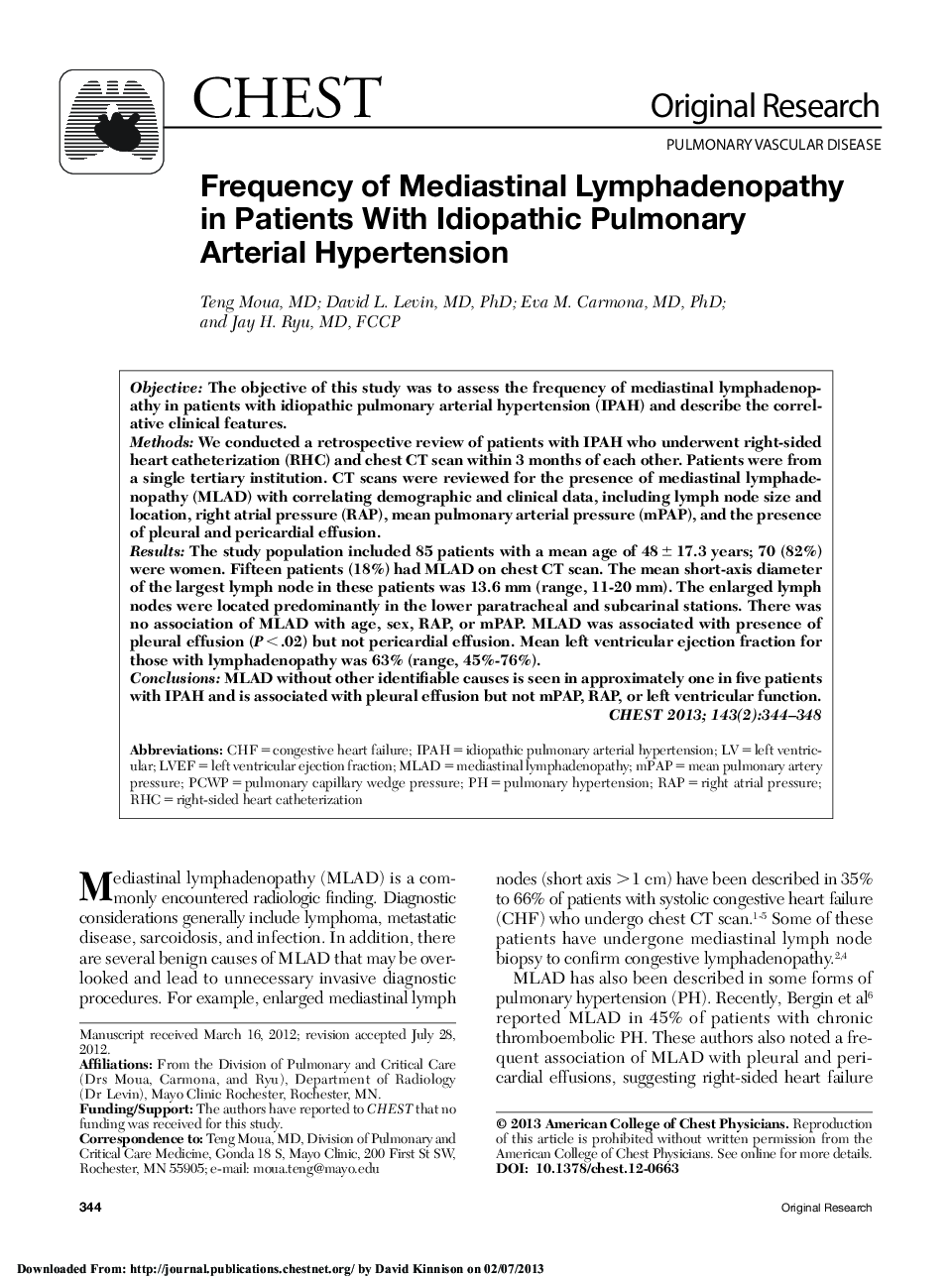| Article ID | Journal | Published Year | Pages | File Type |
|---|---|---|---|---|
| 5955854 | Chest | 2013 | 5 Pages |
ObjectiveThe objective of this study was to assess the frequency of mediastinal lymphadenopathy in patients with idiopathic pulmonary arterial hypertension (IPAH) and describe the correlative clinical features.MethodsWe conducted a retrospective review of patients with IPAH who underwent right-sided heart catheterization (RHC) and chest CT scan within 3 months of each other. Patients were from a single tertiary institution. CT scans were reviewed for the presence of mediastinal lymphadenopathy (MLAD) with correlating demographic and clinical data, including lymph node size and location, right atrial pressure (RAP), mean pulmonary arterial pressure (mPAP), and the presence of pleural and pericardial effusion.ResultsThe study population included 85 patients with a mean age of 48 ± 17.3 years; 70 (82%) were women. Fifteen patients (18%) had MLAD on chest CT scan. The mean short-axis diameter of the largest lymph node in these patients was 13.6 mm (range, 11-20 mm). The enlarged lymph nodes were located predominantly in the lower paratracheal and subcarinal stations. There was no association of MLAD with age, sex, RAP, or mPAP. MLAD was associated with presence of pleural effusion (P < .02) but not pericardial effusion. Mean left ventricular ejection fraction for those with lymphadenopathy was 63% (range, 45%-76%).ConclusionsMLAD without other identifiable causes is seen in approximately one in five patients with IPAH and is associated with pleural effusion but not mPAP, RAP, or left ventricular function.
